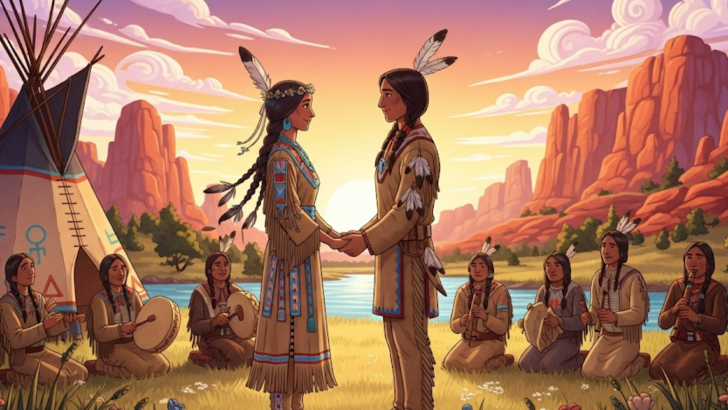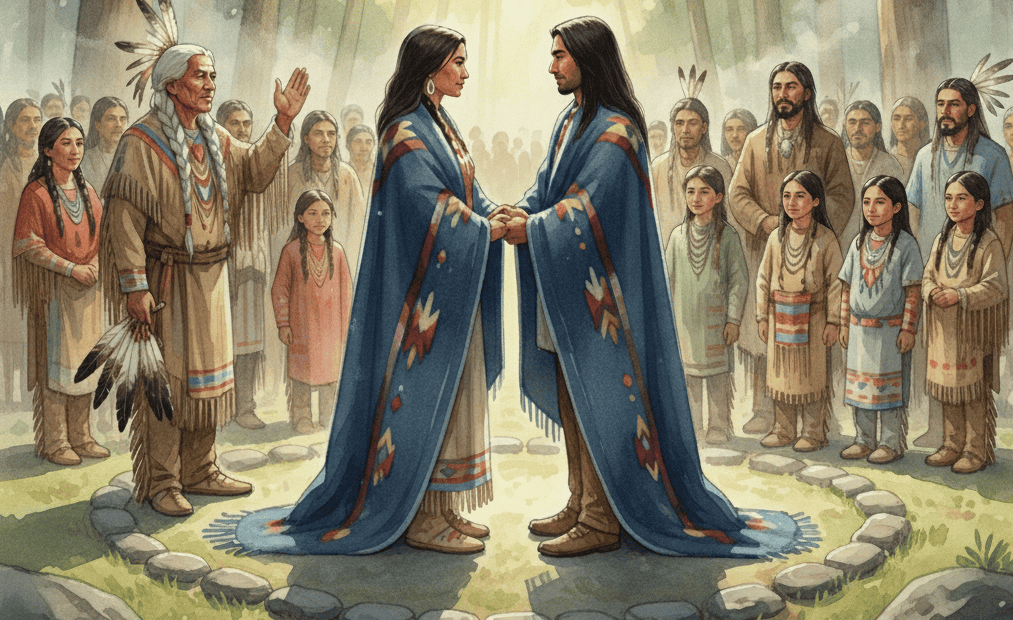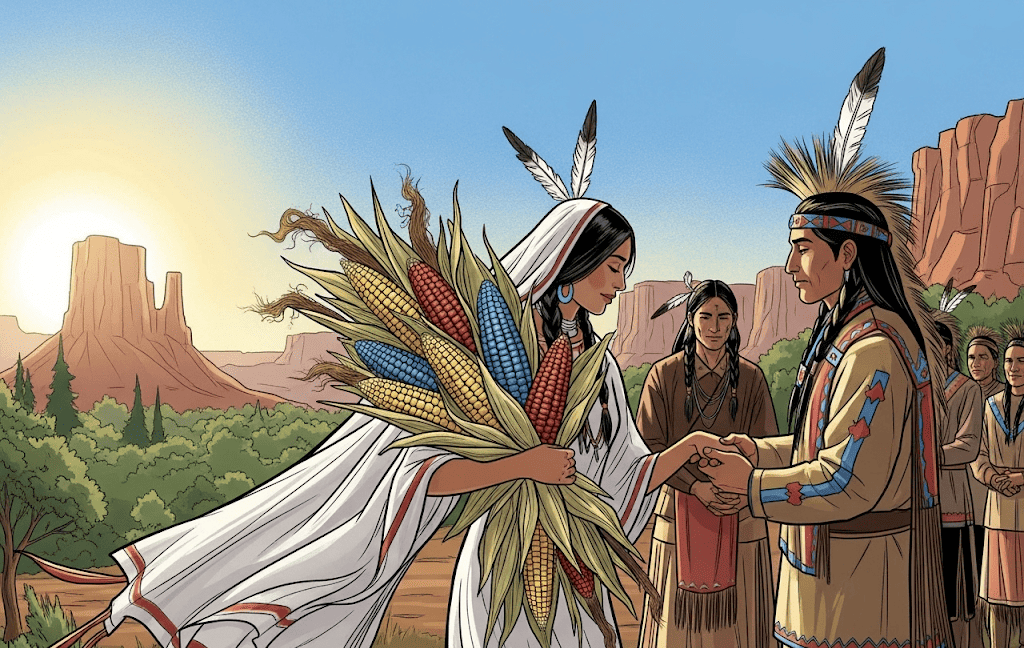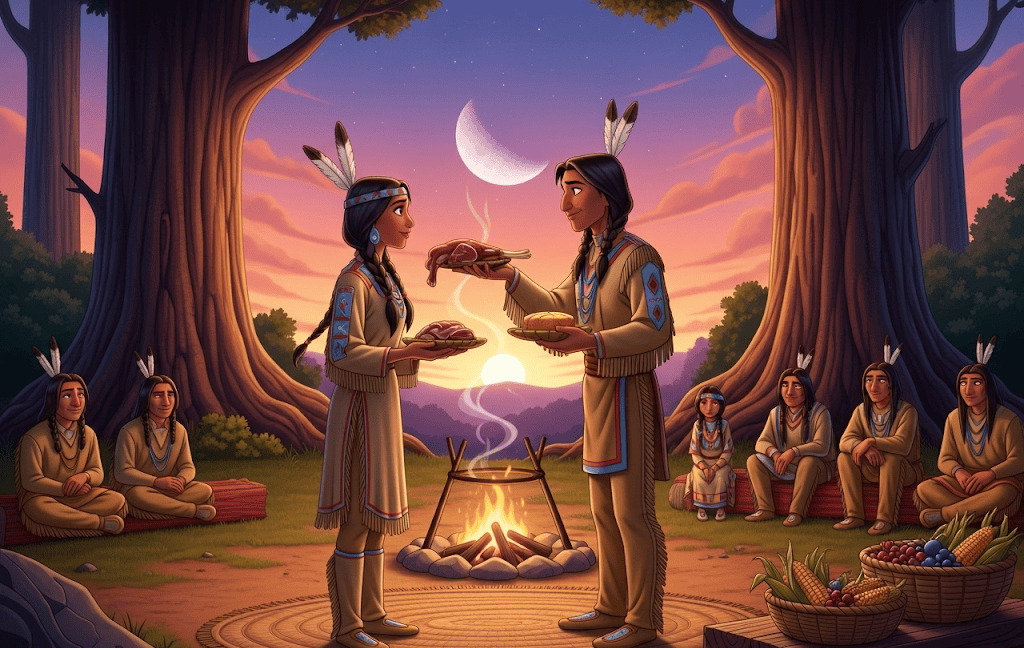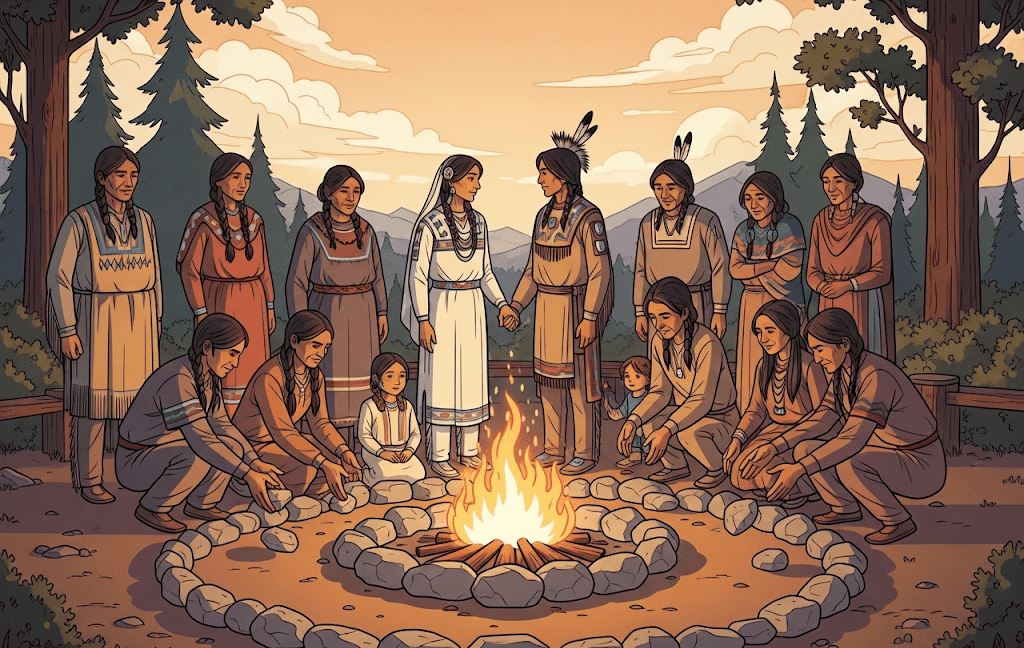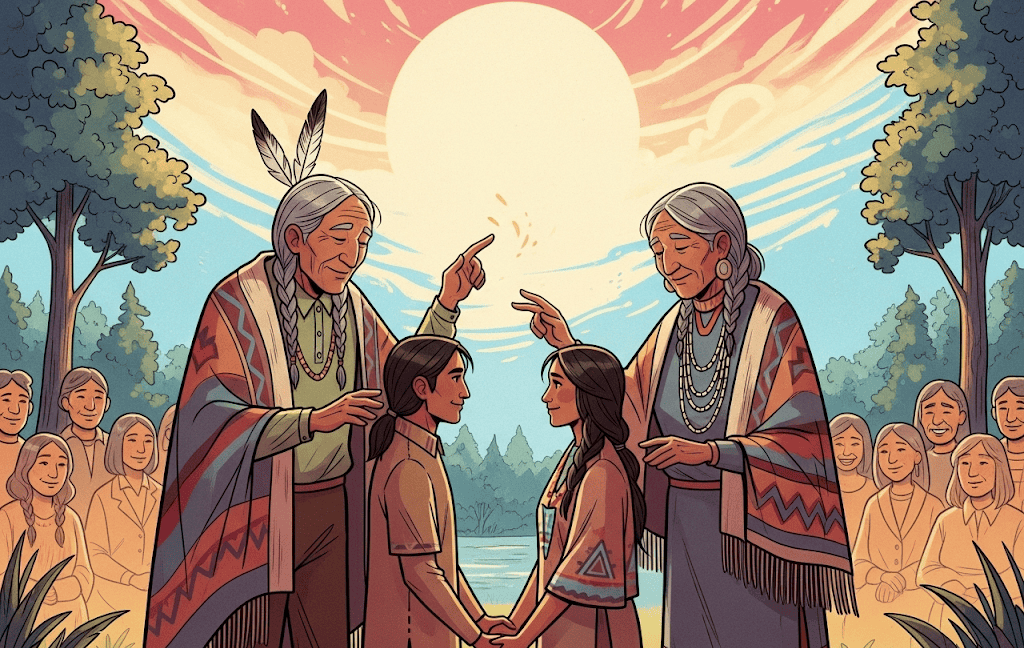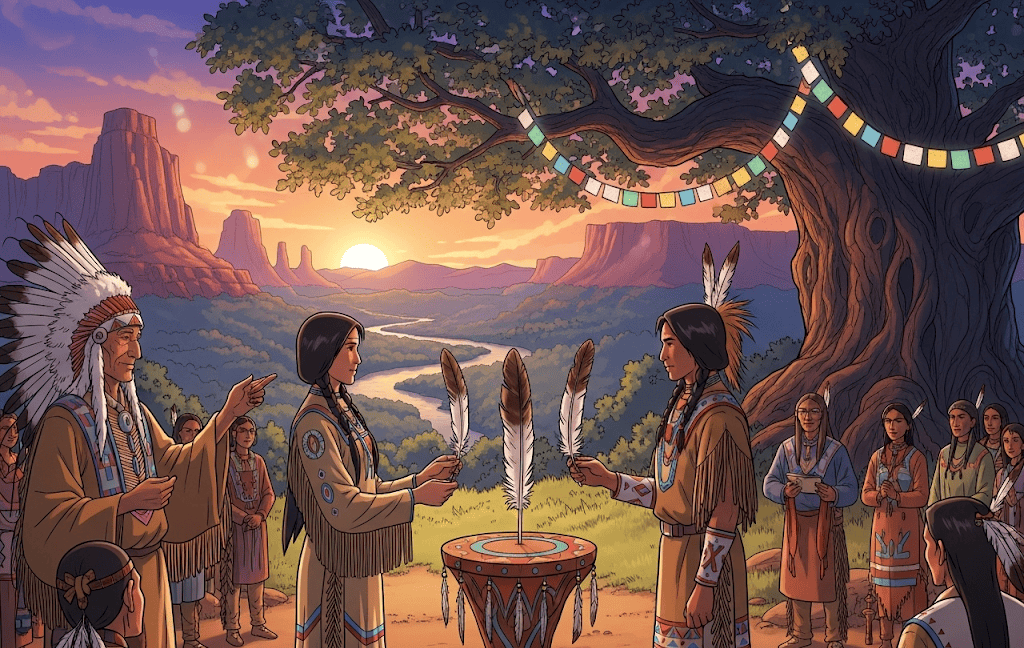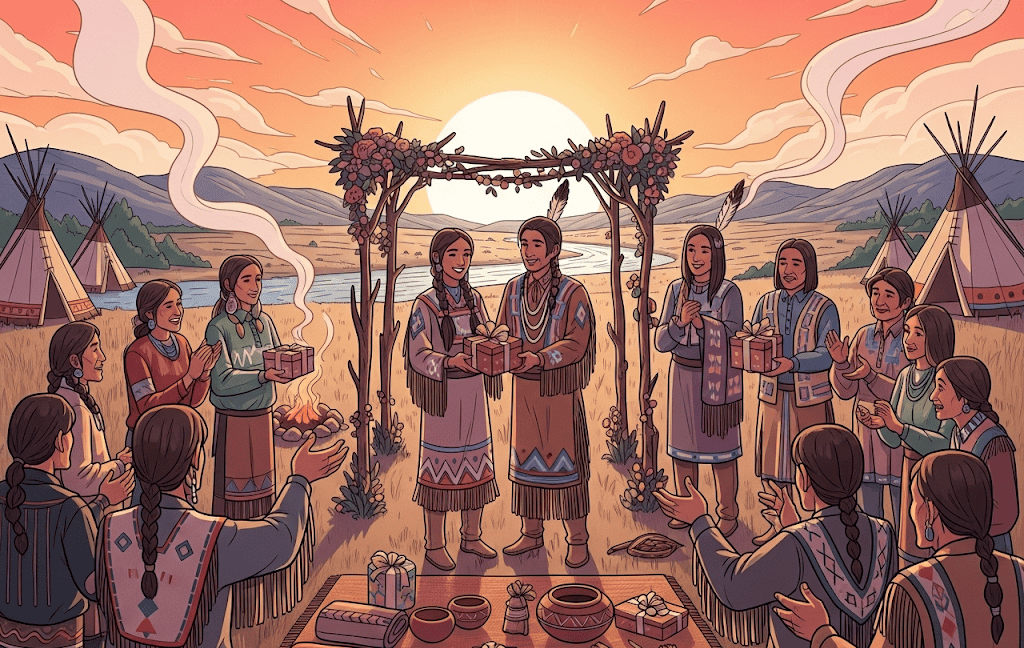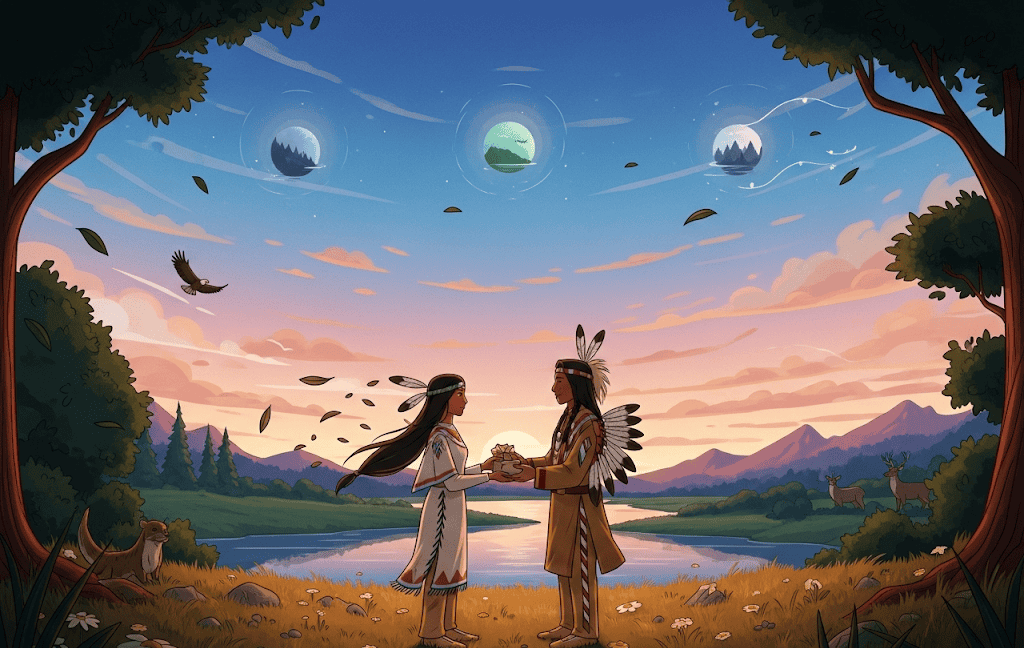When we think about weddings today, most of us picture white dresses, diamond rings, and a big party with music and dancing.
But for many Native American nations, marriage and partnership traditions have always been about much more than a celebration.
They are deeply spiritual, connecting not just two people but also their families, their community, and the natural world around them.
Each tribe has its own practices, stories, and rituals, but all of them highlight the beauty of partnership as a sacred bond.
Here are eight traditions that show how Native American cultures approach love, marriage, and lifelong commitment.
1. The Blanket Ceremony
One of the most moving wedding rituals in several Native American cultures is the blanket ceremony.
In this tradition, each partner is first wrapped separately in a blue blanket. This symbolizes their individual lives and journeys up until the wedding.
Then, after vows are spoken or blessings are given, they are wrapped together in a single white blanket. This represents unity, love, and the new path they will walk as one.
It is both practical and poetic. A blanket is warmth, shelter, and comfort, all things that a good marriage should provide.
Imagine the two newlyweds standing together, wrapped up in the same soft fabric, while their loved ones witness the moment. It is simple, intimate, and filled with meaning.
2. Corn as a Symbol of Partnership
Corn is more than food in many Native American cultures. It is life itself. It represents sustenance, fertility, and the continuation of family lines.
During certain wedding rituals, corn is placed at the center of the ceremony, or the bride may carry corn to symbolize the nourishment she brings into the partnership.
In some traditions, the couple might grind corn together, showing their shared responsibility to feed and support each other.
This act is more than symbolic. It is also a practical reminder that relationships are built on shared work, shared care, and shared joy. Just as corn takes time and patience to grow, so does a lasting marriage.
3. The Exchange of Food
Instead of exchanging rings, some tribes focus on the exchange of food. In Cherokee tradition, for example, the couple might give each other symbolic bites of corn, venison, or bread.
This act shows that they will nourish each other physically, emotionally, and spiritually. Food is love in its most tangible form.
You cook for someone, you feed them, and you keep them strong. The simple act of sharing a meal during a marriage ceremony is a powerful promise.
It says, “I will care for you. I will keep you alive. I will share what I have.”
4. Sacred Fires
Fire holds deep meaning in many Native American traditions. It represents life, spirit, and transformation.
In marriage ceremonies, a sacred fire might be lit to honor the union. Families from both sides may add stones to the fire circle, symbolizing the joining of two lineages into one.
The couple sometimes makes offerings into the flames, asking for blessings on their partnership.
Watching a fire burn is mesmerizing, but when you think of it as the fire of love, it becomes even more meaningful. Flames rise, glow, and sometimes need tending. So does love.
5. The Role of Elders
In many Native American communities, marriage is not just a contract between two individuals. It is a joining of families and, by extension, the whole community.
This is why elders often play an important role in wedding ceremonies. They may offer blessings, prayers, or advice to the couple.
The presence of elders reminds everyone that marriage is not something to figure out alone. Wisdom is passed down through generations, and their words carry the weight of experience.
They have seen joy, heartbreak, and everything in between. When they bless a marriage, it is not just ceremonial. It is guidance born from a lifetime of living and loving.
6. Feathers as Symbols of Unity
Feathers are sacred in many Native cultures, often representing honor, trust, and connection to the spiritual world.
During marriage ceremonies, a feather might be given to each partner or placed in a central spot as a blessing.
The feather reminds the couple to honor each other with honesty and respect. It also symbolizes balance, since a bird needs both wings to fly.
In the same way, a marriage requires two people working in harmony. When one wing falters, the other helps carry the flight.
7. The Giveaway
In some Native American traditions, weddings are a time of generosity. Instead of the couple receiving gifts, they may host a “giveaway” where they present gifts to their guests.
This act symbolizes gratitude, humility, and the idea that marriage is not about what you take but what you give.
Imagine going to a wedding where the bride and groom are the ones showering guests with gifts. It flips the usual idea of weddings upside down, but it makes sense.
A marriage is strongest when it is built on generosity and selflessness, and starting off by giving to others is a beautiful way to set that tone.
8. Honoring Nature in Marriage
Perhaps the most striking part of Native American marriage traditions is how deeply they are tied to the natural world.
Ceremonies often take place outdoors, with the earth, sky, water, and wind as witnesses.
Couples may offer prayers to the four directions or to the spirits of animals, plants, and ancestors. This connection to nature highlights a key truth about relationships.
Love does not exist in isolation. It grows in the context of community and environment. Just as the earth provides balance, nourishment, and life, so should a marriage provide grounding and growth.

私は生まれたときから、常に神との強いつながりを感じていた。作家として、また指導者として、私の使命は、人々が最も暗い時代に愛と幸福と内なる強さを見つけるのを助けることである。

